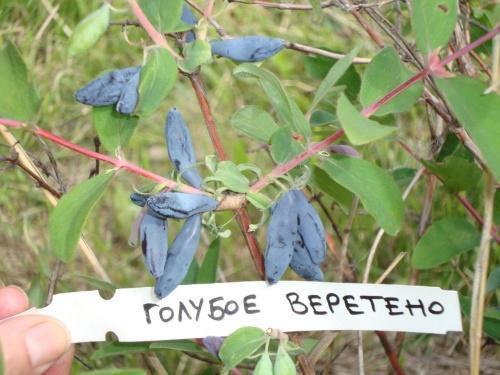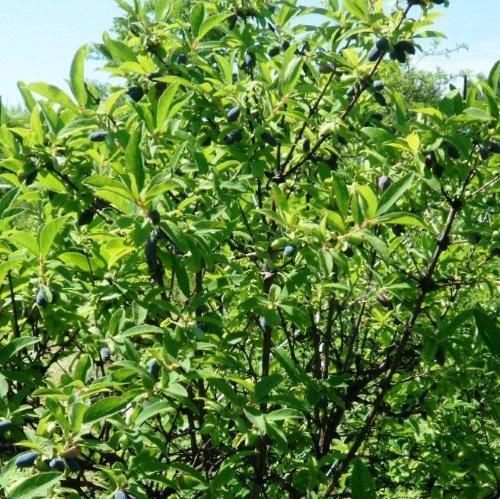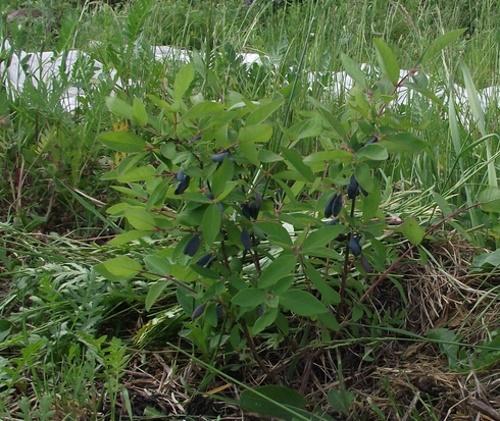The blue spindle is one of the largest and hardiest varieties of honeysuckle
 Among the types of edible honeysuckle, the Blue Spindle variety is one of the most popular among gardeners, especially in the harsh Siberian regions. It is not surprising, because it was for this climatic zone that the variety was specially bred and successfully tested by local weather conditions. In addition, blue-blue long berries are among the first to ripen and have a pleasant taste.
Among the types of edible honeysuckle, the Blue Spindle variety is one of the most popular among gardeners, especially in the harsh Siberian regions. It is not surprising, because it was for this climatic zone that the variety was specially bred and successfully tested by local weather conditions. In addition, blue-blue long berries are among the first to ripen and have a pleasant taste.
Description of the variety
Honeysuckle The blue spindle has a fairly decent size: the height of an adult bush can reach 2 m, but its crown is sparse, slightly rounded. Green shoots grow straight, slightly at an angle, no pubescence. The leaves are, as it were, folded in half, but not completely, elongated, painted in a dark green color, with a bluish tint.
From the second decade of June, large long berries begin to ripen on the bushes. The weight of one berry is 1.5 g, and the length is almost 3 cm, near the stem they are slightly flattened, and sharp at the tip. The honeysuckle peel of a characteristic blue-blue color with a waxy coating, dense, covered with tubercles. The tender pulp gives off a slight sourness and usually does not contain bitterness.
The Blue Spindle variety got its name for its rich color and elongated, sinuous shape of the berries.
Advantages and disadvantages
Honeysuckle Blue Spindle is an ideal choice for northern regions, but in another climatic zone the shrub fully retains its characteristics and pleases with a tasty harvest. The variety is worthy of attention, since it has many advantages, namely:
- the first harvest on average can be obtained already 4-5 years after planting, but often the first few berries can be tried already in the second year of the bush's life;
- the variety is early maturing, in warm climates fruiting is possible already at the end of May;
- high yield (up to 2.5 kg of berries per bush);
- berries are one of the largest and most delicious;
- high winter hardiness (the bush does not freeze even without additional cover).
The blue spindle is a self-fertile cultivar. To increase yields, it is recommended to plant a Blue Bird, Cinderella or Kamchadalka nearby.
Of the disadvantages of the variety, it is worth noting that the harvest should be removed almost every day, because the berries are heavily crumbled. Also, gardeners have noticed that in dry summers, when precipitation is rare and there is no watering, honeysuckle appears bitter.